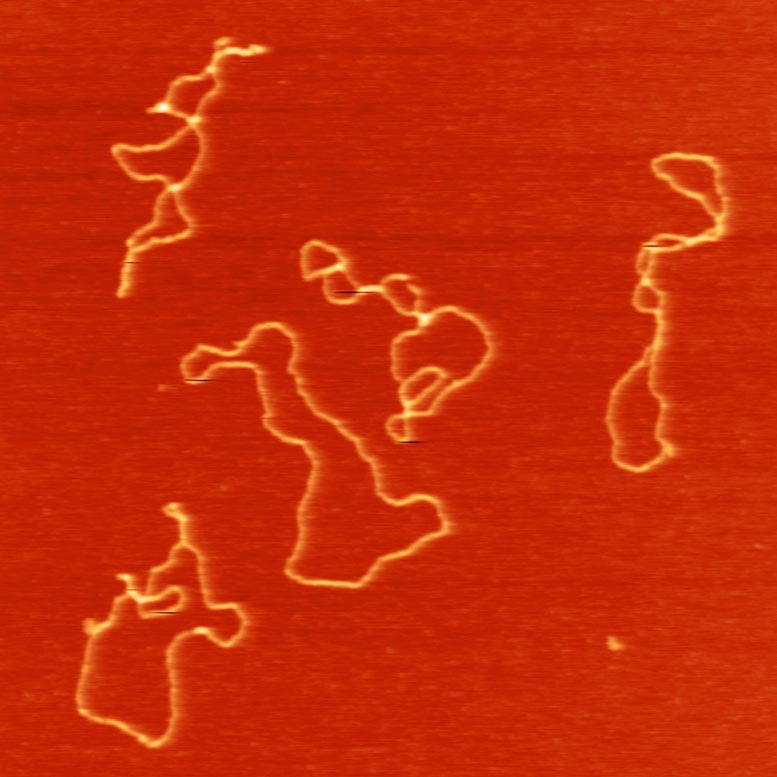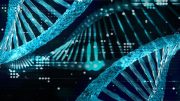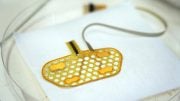
Research from Duke University overturns previous beliefs about retrotransposons, showing that these DNA sequences actively use cellular mechanisms to form circular shapes and replicate. This finding, which has implications for understanding genetic evolution and diseases, challenges the long-held view that circular DNA is merely an accidental by-product. Credit: SciTechDaily.com
Circular DNA, thought to be an accidental byproduct, is borrowing the cell’s DNA repair mechanisms to copy itself.
Like its viral cousins, a somewhat parasitic DNA sequence called a retrotransposon has been found borrowing the cell’s own machinery to achieve its goals.
In research published in the journal Nature, a Duke University team has determined that retrotransposons hijack a little-known piece of the cell’s DNA repair function to close themselves into a ring-like shape and then create a matching double strand.
The finding upends 40 years of conventional wisdom saying these rings were just a useless by-product of bad gene copying. It may also offer new insights into cancer, viral infections, and immune responses.
Retrotransposons are segments of DNA around 7,000 letters long that copy and paste themselves into different parts of the genomes of both plants and animals. By doing this, they play a role in rewriting DNA and regulating how the cell uses its genes. Retrotransposons are believed to be behind a lot of the variation and innovation in genes that drives evolution, and are inherited from both parents.
Implications in Evolution and Disease
Many studies have suggested that these rings of DNA outside the chromosomes are somehow involved in the development and progression of cancer in part because they are known to harbor cancer-driving oncogenes within their DNA sequences. The retrovirus HIV, which causes AIDS, is also known to form circular DNA.

Ring-like circular DNA has been seen copying itself by borrowing some of the cell’s machinery, just as a virus does. Credit: Fu Yang, ZZ Lab at Duke University
“I think these elements are the source of genome dynamics, for animal evolution and even to affect our daily lives,” said Zhao Zhang (ZZ), an assistant professor of pharmacology and cancer biology and a Duke Science & Technology scholar. “But we are still in the process of appreciating their function.”
Unraveling the Mystery of Retrotransposons
Retrotransposons are quite common – they make up about 40% of the human genome, and more than 75% of the maize genome – but how and where they copy themselves has always been a bit murky.
Zhang holds up a thick textbook on retroviruses that he consulted for this study. The books say the ring-like sequences are “created by recombining the two ends of linear DNA, and are just a dead end, a by-product of failed replication,” he said.
In earlier work with fruit fly eggs, Zhang’s team had established that inherited retrotransposons use the ‘nurse cells’ that support the egg as factories to manufacture many copies of themselves that are then distributed throughout the genome in the fly’s developing egg. This model system allowed the researchers to zoom in still further to learn more about retrotransposons.
In the latest work, they found unexpectedly that most newly added retrotransposons were in this circular form rather than being integrated into the host’s genome. Then they ran a series of experiments knocking out the cell’s DNA repair mechanisms one at a time to figure out how and where the circles are being formed.
The answer: A little-studied DNA repair mechanism called alternative end-joining DNA repair, or alt-EJ for short, which repairs doubles-stranded breaks. The retrotransposon sequences were using this part of the host’s repair machinery to sew the ends of their single-stranded DNA together and then using its DNA synthase to create a matching double-strand. For good measure, the researchers confirmed that this is also the process within human cells.
Rethinking Circular DNA
So retrotransposons aren’t a sloppy accident; they’re actually hijacking a little bit of the cell’s machinery to manufacture more of themselves, just like viruses do.
“Our discovery actually overturns the textbook model,” Zhang said. “We showed that the recombination event proposed by the textbook is not important to forming rings,” Zhang said. “Instead, it’s the alt-EJ pathway driving circle production.”
“My lab currently is trying to test whether circular DNA can be an intermediate to make new genome insertions,” Zhang said. “We’re also testing whether circular DNA can be sensed by our immune system to trigger an immune response.”
“In the retroviral field and retrotransposon field, people think circular DNA is just a minor event, but our study is bringing circular DNA into the center stage,” Zhang said. “People should pay more attention to circular DNA.”
Reference: “Retrotransposons hijack alt-EJ for DNA replication and eccDNA biogenesis” by Fu Yang, Weijia Su, Oliver W. Chung, Lauren Tracy, Lu Wang, Dale A. Ramsden and ZZ Zhao Zhang, 12 July 2023, Nature.
DOI: 10.1038/s41586-023-06327-7
Funding for this study came from the National Cancer Institute (P01CA247773), National Institutes of Health (DP5 OD021355, R01 GM141018) and the Pew Biomedical Scholars Program.









Be the first to comment on "Genetic Hijackers: How Sneaky Retrotransposons Are Rewriting the DNA Playbook"